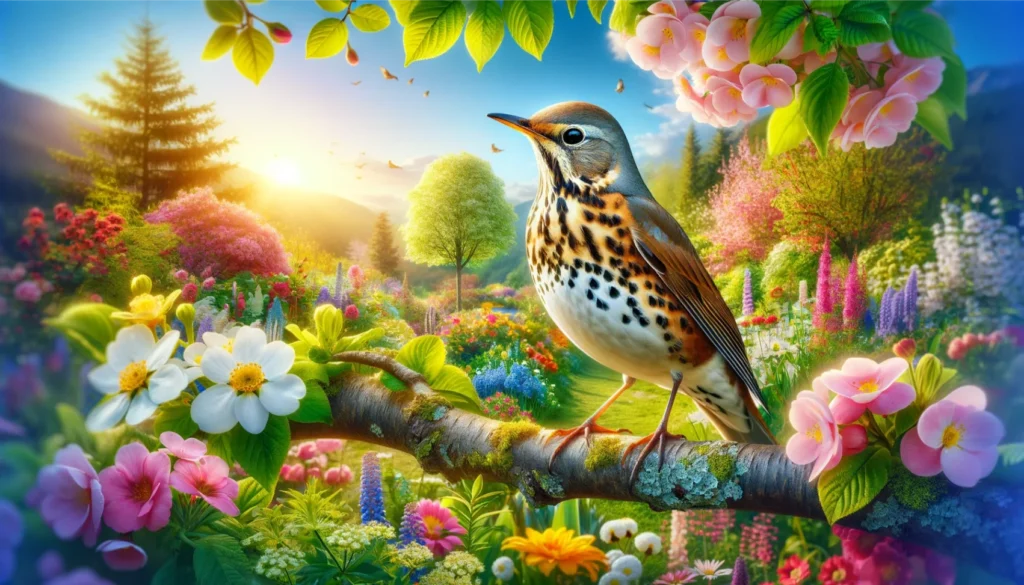13 Interesting Facts About Thrush
What is a Thrush Bird?
Thrushes are a family of small to medium-sized passerine birds that inhabit wooded areas around the world. They are plump, soft-plumaged songbirds with slender bills, rounded heads, straight tails, and fairly long legs designed for hopping on the ground. Thrushes are omnivorous, feeding on insects, earthworms, snails, and fruit. They build neat, cup-shaped nests in trees or shrubs in which they lay blue or greenish eggs with dark spots.
While thrushes lack bright colors, they make up for it with beautiful songs. The best-known North American thrush is the American Robin, with its familiar reddish-orange breast. Others include the bluebirds, varied thrush with its bright orange markings, hermit thrush with its reddish tail, and Swainson’s thrush. Many thrushes are shy, forest-dwelling birds that spend much of their time hidden in dense undergrowth, running along the ground. However, they will occasionally pause out in the open, flicking their wings and tail in nervous motions. Thrushes migrate long distances and their global population spans North America, Europe, Asia, Africa, and Central and South America.
Here are 13 fascinating facts about these songbirds:

Interesting Facts About Thrush Bird
1. There Are Over 200 Species
The thrush family, Turdidae, contains over 200 different species spread across every continent except Antarctica. Some well-known thrushes include the song thrush, mistle thrush, blackbird, American robin, and bluebird.
2. They Have a Distinctive Shape
Thrushes have a distinctive body shape – they are generally plump with small heads, short necks, medium to long tails, and strong legs. Many species have spotted juvenile plumage.
3. Thrush Habitats Vary Widely
While some thrive in forests, others thrive in more open habitats like meadows, farmland, parks, and suburban areas. Some species even live in treeless environments like mountains and deserts. Their nesting habits are similarly diverse.
4. Most are Omnivorous
The majority of thrushes have an omnivorous diet, feeding on a combination of insects and fruit. Earthworms, snails, and small vertebrates are also eaten by some species. A few thrushes are mainly fruit-eating.
5. They Have Beautiful Songs
Male thrushes are renowned for their songs, which are used to defend territories and attract mates. Songs vary between species but are generally melodious. The European songs Thrush and Wood Thrush have particularly musical voices.
6. Thrushes Play a Role in Ecosystems
As consumers of fruit and invertebrates, thrushes help disperse seeds and control insect populations. Their abandoned nests create cavities used by other wildlife. And they are prey for larger predators.
7. Some Migrate Long Distances
While tropical thrushes are mostly sedentary, northern hemisphere species often migrate huge distances between breeding and wintering grounds. The redwing travels from Russia to southern Asia.
8. They Have an Unusual Breeding Strategy
The great thrush of South America has a unique cooperative breeding system where up to 15 birds work together to build nests, incubate eggs, and raise chicks.
9. Thrushes Have Had Literary Significance
In medieval European poetry, the song thrush symbolized love and spring. More recently, the birds have been subjects for writers like Edward Thomas and Robert Frost.
10. Some Species Are Declining
Habitat loss and predation mean that thrushes like the wood thrush are rapidly declining in numbers. Nine species are globally threatened. Introduced species pose problems for island thrushes.
11. They Have Misleading Names
Several thrushes have confusing common names. The blackbird is a species of thrush. And the American robin is named after the European robin but the two aren’t closely related.
12. People Keep Them as Pets
Some thrushes like the white-backed thrush of Indonesia have beautiful songs and are popular as cage birds. However, taking wild songbirds for the pet trade often negatively impacts populations.
13. One Thrush Has a Taste for Eggs
The Tristan thrush of the Atlantic islands has a unique habit of eating seabird eggs. It can even tackle the large eggs of albatrosses and shearwaters.
In conclusion, thrushes are a remarkable family of birds that come in many shapes and sizes. Hopefully, these interesting facts have shown why the world’s 200+ thrush species deserve appreciation and protection.







